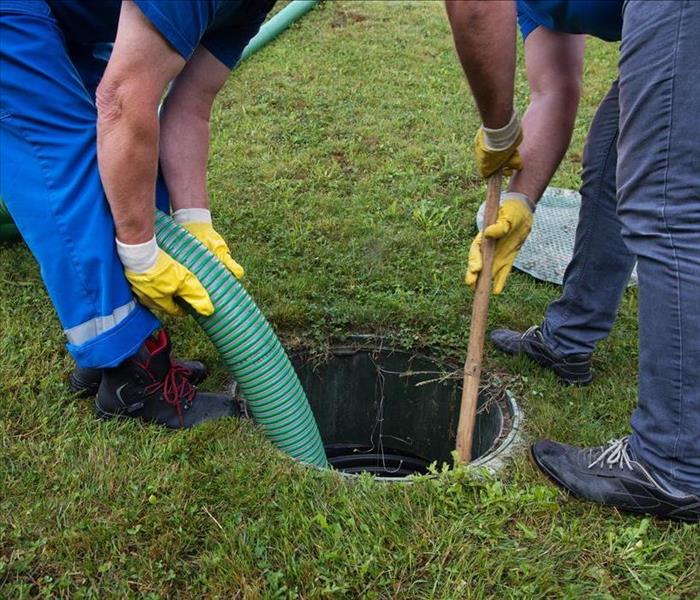5 Steps for Cleaning After a Sewage Backup
7/28/2021 (Permalink)
 Residential sewage cleanup can be disgusting. Follow these steps or hire a professional team to take care of it.
Residential sewage cleanup can be disgusting. Follow these steps or hire a professional team to take care of it.
A sewer backup could be one of the worst things to happen to your Colorado Springs, CO, home. Not only is it an unsanitary mess, but it creates a horrendous odor. It's something no one ever wants to occur, but the key is to be proactive and learn how to mitigate the damage if it does happen. Here are some steps for residential sewage cleanup.
1. Turn Off Electricity
First, it's crucial to shut off the electricity to the affected area. If electronics or outlets came in contact with the water, an electrical current could be flowing through the water. If you can't safely navigate to the power breaker, you must call an electrician to turn it off before anyone can enter the space.
2. Wear Personal Protective Equipment
When you're ready to begin work in the area, stay safe by wearing PPE. Safety glasses, a face mask, and protective gloves are standard for sewage cleanup. Don't wear the PPE outside of the affected area, as it could spread the germs to unaffected areas of the house.
3. Remove Water
You'll have to remove all of the standing water first. The most efficient and effective method of removing water is by using a wet/dry vacuum. It can quickly and safely extract water and small debris. Water damage restoration professionals utilize commercial-grade pumps for this.
4. Clean and Disinfect Everything
Next, you must clean and disinfect the affected area and contents. Disinfection is essential for anything that has come in contact with sewage and harsh chemicals.
5. Dry Everything
Finally, you must dry it thoroughly as quickly as possible. The more prolonged moisture is left to linger, the more damage it'll do. Mold growth also begins within 24 to 48 hours. People typically use dehumidifiers and fans.
Whether you have a flooded toilet or a major sewer backup, sewage cleanup is going to be unpleasant, to say the least. However, understanding the basic steps to take could benefit you in the future.



 24/7 Emergency Service
24/7 Emergency Service